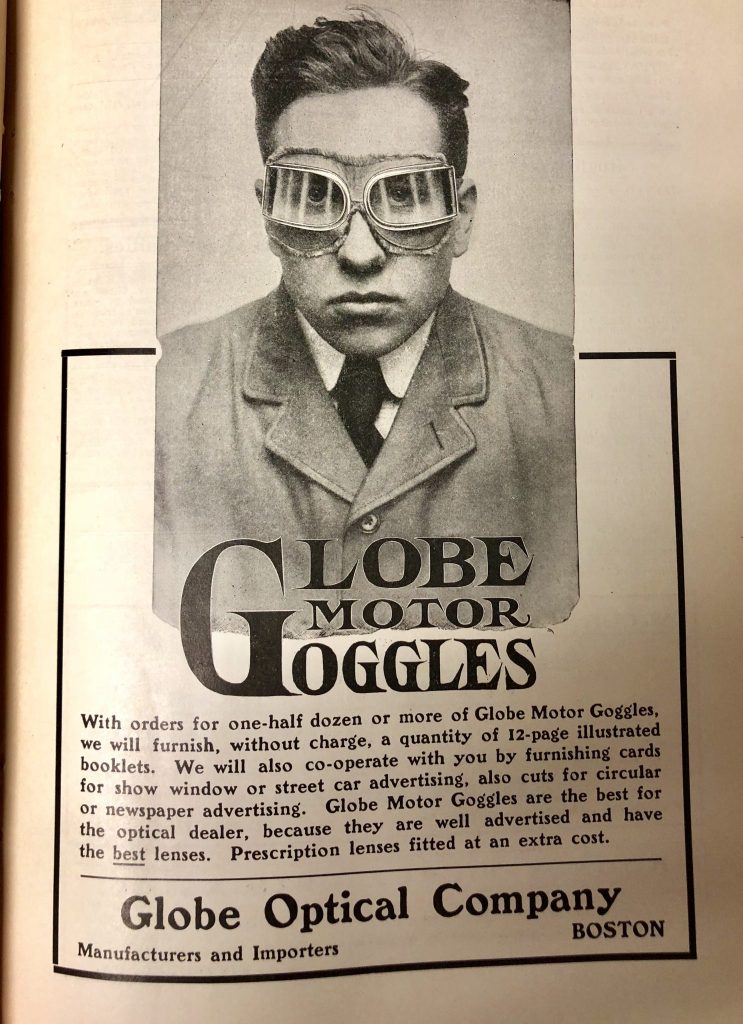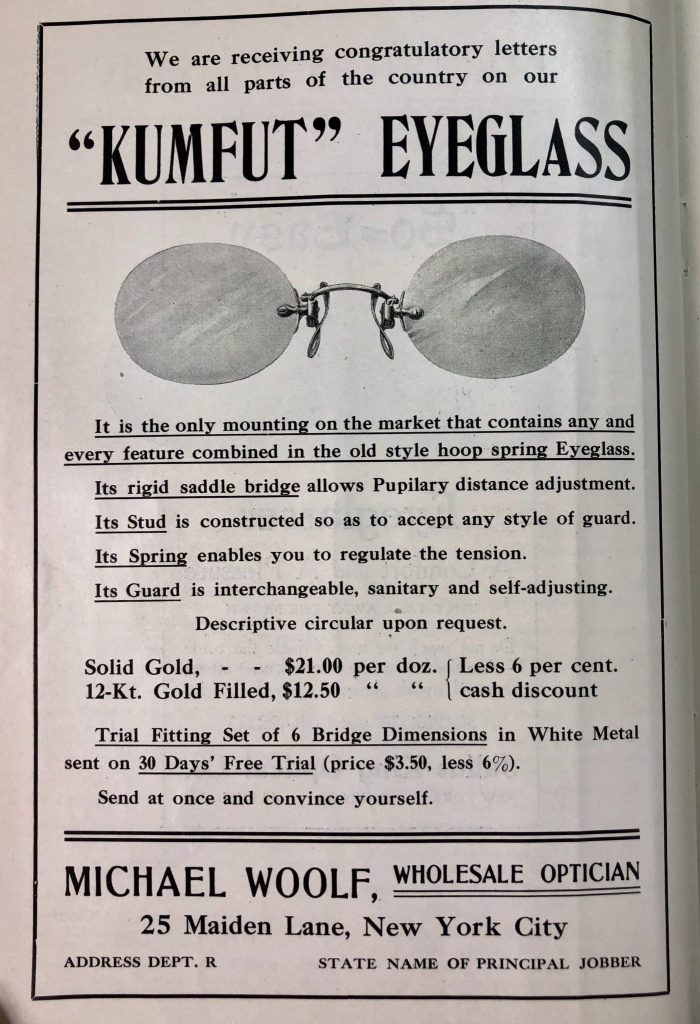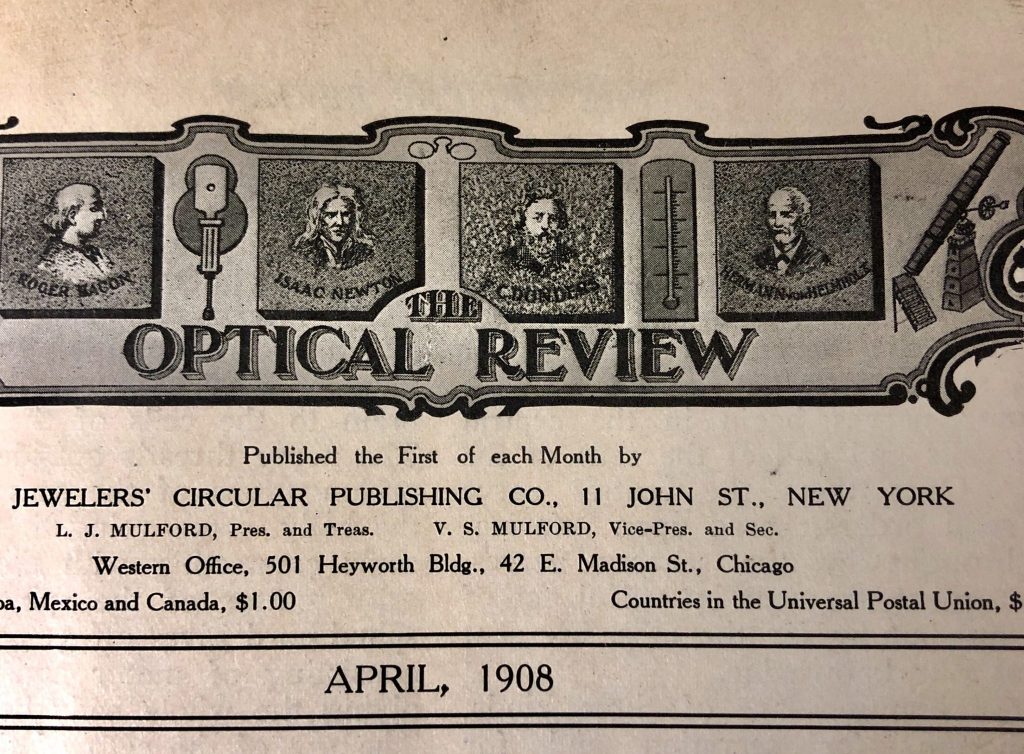
I was handed down a copy of The Optical Journal from 1908, which was passed down from my Clinic Manager’s previous generations who all took pride in their professions in the Optical industry. I have a sense of pride in being able to read this publication, knowing the history of those who have previously read it and deemed it important enough to keep and pass down after all of these years. We work in an industry that changes people’s lives for the better and I too would hope I could pass such a book of rich history down another generation to someone who would appreciate it as much.

According to the Review of Optometry, this publication was originally created in 1891, known as The Optician, to meet the needs of refracting opticians. After a short hiatus from its earlier version, in 1895 The Optical Journal, is introduced. In 1910 The Optical Journal and Review of Optometry becomes a consolidated publication when the journal absorbs a three-year old publication The Optical Review.
1908 was a pivotal time for Optometry as states across the US were passing legislation to recognize it as a profession. This was also the time period when the 3 O’s lined up ie Ophthalmologist, Optometrist, Optician.
According to the Optical Heritage Museum, the AAO American Association of Opticians changed its name to AOA, around the time of this book.
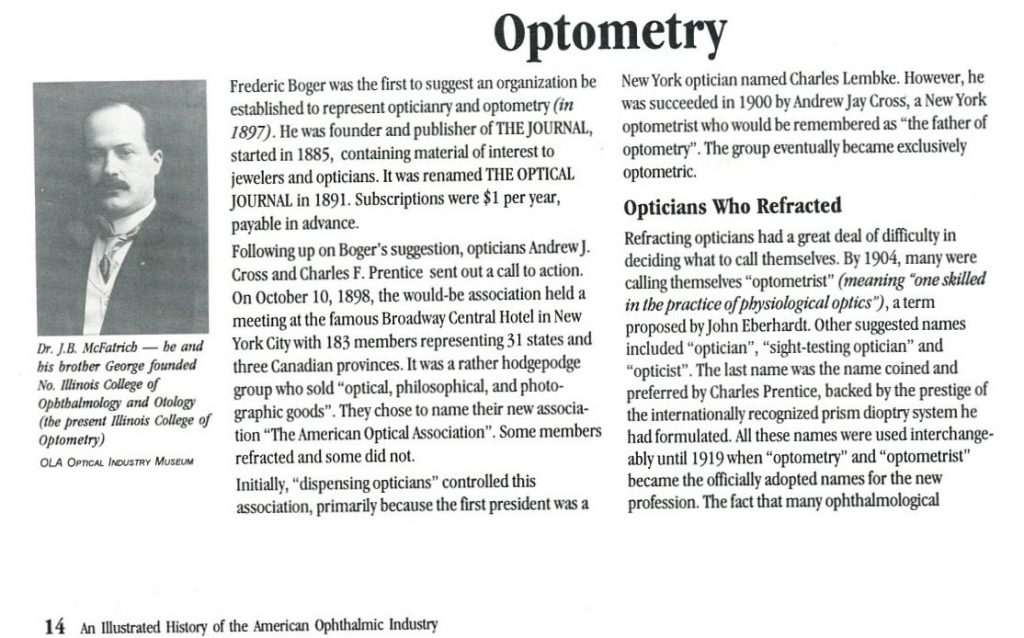
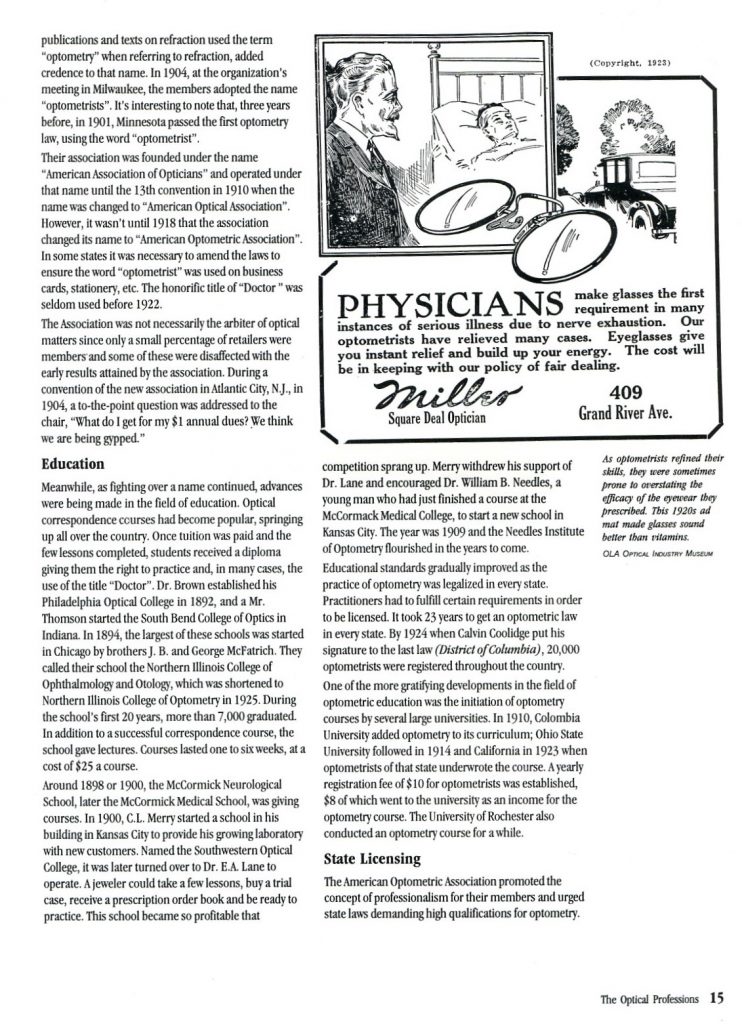 The following two pages were sent to me by the Optical Heritage Museum, for this article, to show a little more detail in the timing of these changes. The pages are from “Looking Back: An Illustrated History of the American Ophthalmic Industry“, a book by Joseph L. Bruneni, which is highly recommended by the museum.
The following two pages were sent to me by the Optical Heritage Museum, for this article, to show a little more detail in the timing of these changes. The pages are from “Looking Back: An Illustrated History of the American Ophthalmic Industry“, a book by Joseph L. Bruneni, which is highly recommended by the museum.
In 1898 Charles Prentice and Andrew Cross, then Opticians, held a meeting in New York City and named their new association “The American Optical Association”. Initially dispensing opticians controlled this association but in 1900 it was taken over by Andrew Jay Cross, an Optometrist later remembered as “the father of optometry”. (click the images to make larger)
The Code of Ethics of the American Association of Opticians
Each member should fully appreciate the responsibilities assumed by him, and endeavor by unceasing study to qualify in the important work of ministering to the visual needs of his fellow men.
He should at all times emphasize the fact that the optometry is a purely technical profession based upon comprehensive knowledge of the mechanism of the human eye, the skillful manipulation of instruments for its adequate examination and knowledge of the properties of light and the relative effect thereon of lenses.
He should cultivate those sensibilities which permit the formation of standards for the generous appreciation of the work of others and the criticism of his own.
He should discourage the use of titles calculated to mislead or cause confusion in the public mind. His methods of publicity should rigidly adhere to a dignified and modest statement of fact.
He should value his services commensurate with his ability, special preparation and skill, always welcoming the opportunity to be generous with his knowledge where it is needed, thereby realizing in fullest measure the true success which lies in the consciousness that the world has profited by his work.
The following images I found interesting:
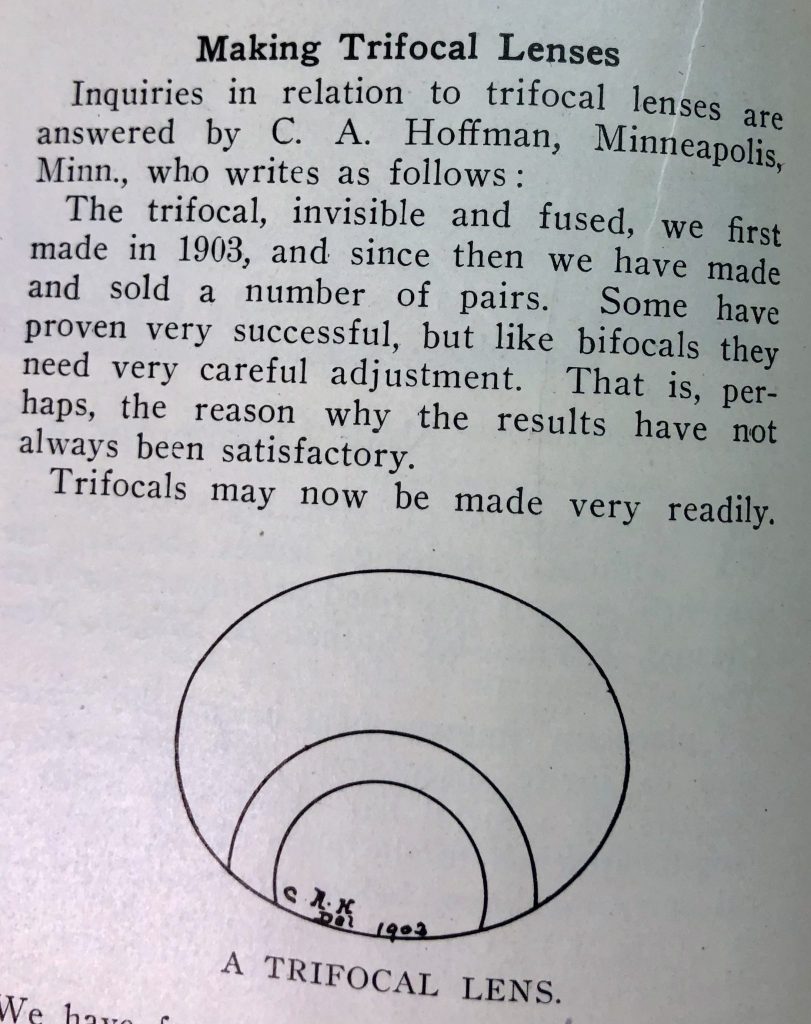

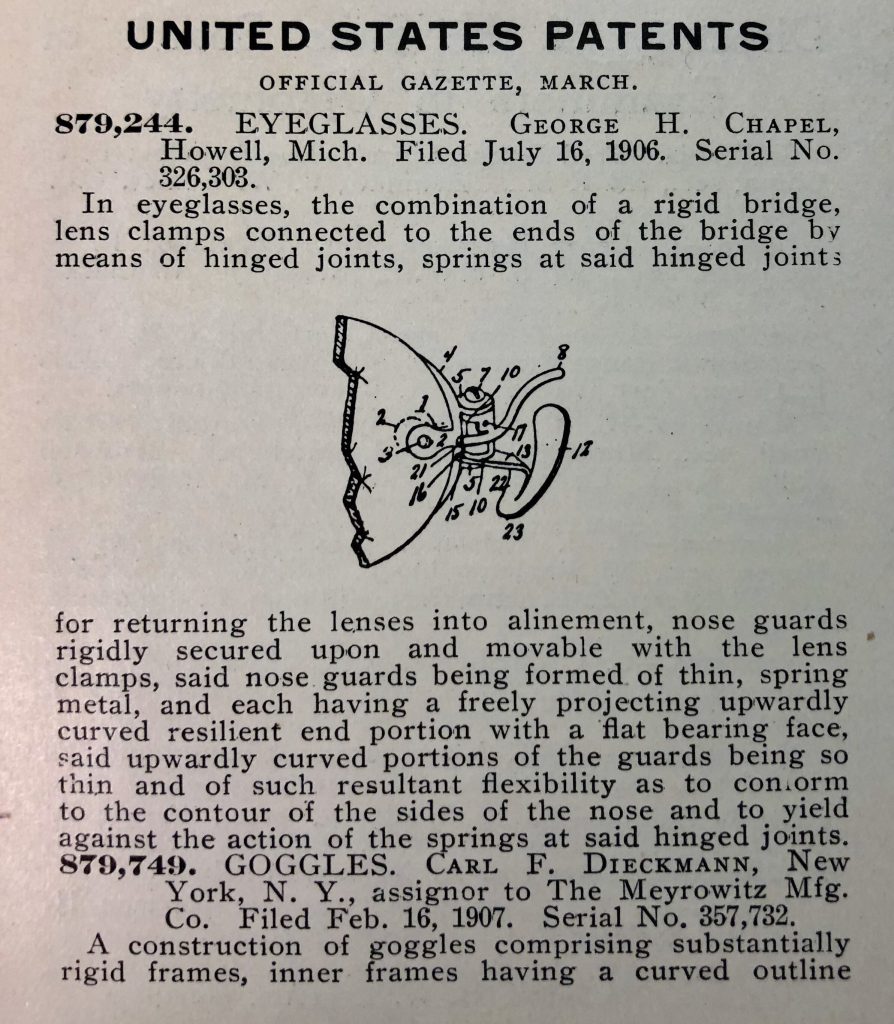

This one is a gem, a letter written by Charles Prentice to the editor a magazine, correcting their published errors. (click to make larger)
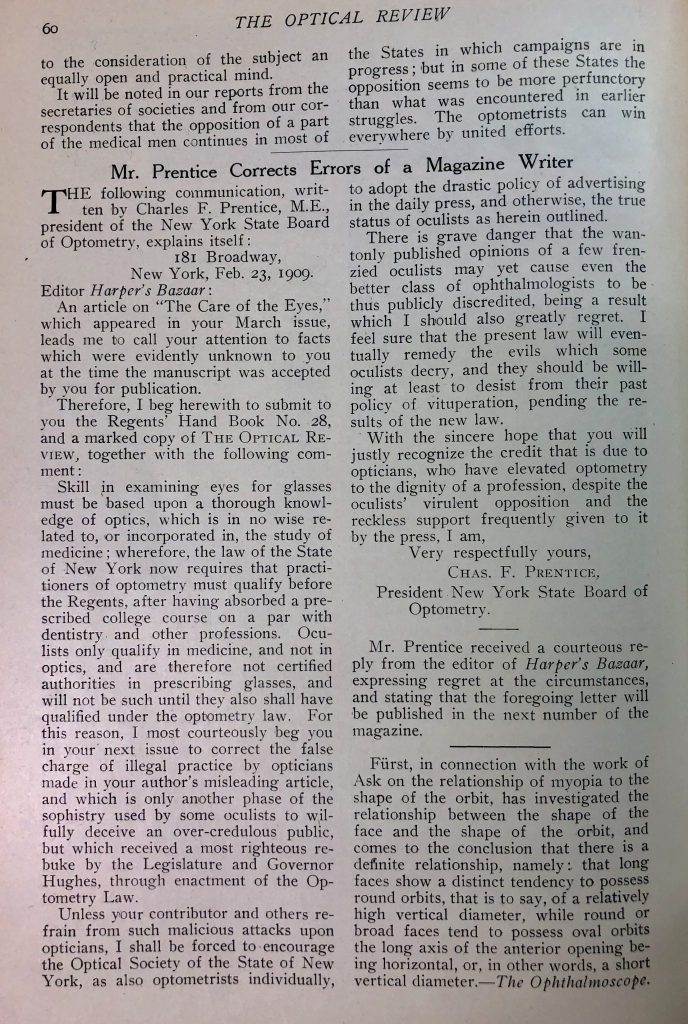
Another gem, a help wanted ad, short and simple but they “must be sober” (1st listing)

Wait, another great one! Apparently in 1908 super extended ranges of vision were to be possible and man was to be able to see from London to New York!

And finally, I will leave you with a few ads from the book (click for larger)
